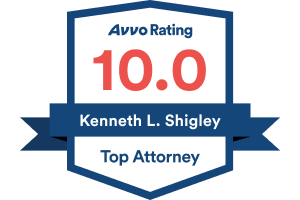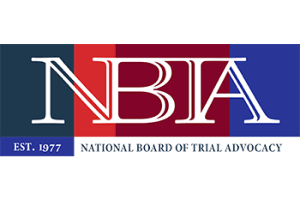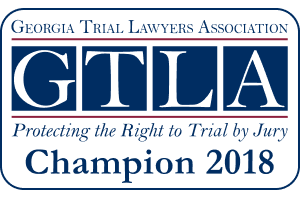










Truck Accident FAQs
- Why Is It Important to Immediately Hire a Real Trucking Trial Attorney After a Catastrophic Truck Crash?
- What Is the Law in Georgia on Negligent Hiring and Retention of a Truck Driver?
- When Is a Trucking Company Liable for Poor Visibility of a Truck on a Roadside at Night?
- What Is the Role of Truck Driver Fatigue in Truck Crash Cases?
Why Is It Important to Immediately Hire a Real Trucking Trial Attorney After a Catastrophic Truck Crash?
When a family member is killed or seriously injured in a crash with a tractor trailer, a normal human instinct is to wait a decent interval before consulting an attorney. Then one may be inclined to take one’s time talking with a hometown lawyer who handles an occasional car wreck case along with divorces, criminal cases and real estate closings. Meanwhile, trucking companies and their insurance companies are busy burying incriminating evidence.
A recent case in our office illustrates the importance of striking hard and fast to preserve evidence. While a truck crash victim was in ICU at the local hospital for three days, lingering in a coma on the front porch of eternity, a relative reached out to one of my colleagues who immediately brought me into the case.
While the undamaged truck was still in police impound, we immediately filed a petition in the Superior Court of the county where the crash occurred for temporary restraining order to lock down a long list of physical and electronic evidence for expert inspection. We recovered telematic data that proved the truck was going 10 MPH over the speed limit, still accelerating, until it crashed into a line of cars stopped at a red light.
We also recovered from the truck dashcam and driver view video. It dramatically showed in split screen the truck speeding into the line of stopped cars without slowing or braking while the truck driver idly gazed around with bleary eyes. That video concluded with our victim’s car exploding into the truck’s windshield.
If we had not acted quickly to obtain a court order to preserve evidence, much of that critically important data would have been “lost” and we never would have seen it.
I really wanted to try that case before a jury. Our focus groups felt the case was worth an impressive amount in “high eight figures.” But the clients chose to accept a confidential settlement in the “high seven figures” rather than go through the emotional ordeal of trial. I cannot argue with the family’s choice for quiet closure.
Standard operating procedure for trucking companies and insurers is to send a rapid response team to the crash scene before the vehicles are removed, sometimes before an ambulance can remove a victim. The rapid response team generally includes a defense lawyer, investigator and accident reconstruction expert. They work under the cloak of trial preparation under the supervision of legal counsel in an effort to keep their work secret.
When a victim’s traumatized family is in a hospital vigil or planning a funeral, the trucking company’s insurer has a rapid response team combing over the evidence. They may persuade police investigators to see the defense point of view and quietly delete telematics and video data that would be damning.
By the time the victim’s family hires a lawyer who knows anything about litigation of serious truck accident cases, the most important evidence may have disappeared. We have had cases where truck driver logs and other critical evidence was “lost” while State Troopers were focused on directing traffic and removing debris from the highway and a rapid response team combed over the truck.
Another mistake that families of victims often make is to choose a lawyer who does not litigate serious truck crash cases. That may a good hometown lawyer who handles regular car wreck cases but does not have expertise in trucking. Or it may be a “personal injury settlement mill” that advertises heavily but just tries to flip cases fast to get the easy money without of serious work.
That includes law firms that run expensive television ads and billboards with pictures of big trucks. They may claim to have legions of trucking lawyers, but are not involved in any of the national organizations of trucking law experts and do not do the serious work involved in such cases. If those firms can’t settle easily, they may associate a trucking specialist, but by then evidence is likely lost.
Too often families of crash victims, not knowing any better, hire a lawyer who solicits them directly or through an agent or “runner” in the days after the crash. Such solicitation of victims is an ethical violation punishable by disbarment in Georgia. If you want to hire a lawyer who is willing to commit a major ethical violation in order to get the case, remember that when you lie down with dogs you get up with fleas.
The Academy of Truck Accident Attorneys is a great place to find a real trucking attorney. If a family member is the victim of a catastrophic truck crash in the Southeast, call us at (404) 253-7863.
What Is the Law in Georgia on Negligent Hiring and Retention of a Truck Driver?
Often in a catastrophic truck crash, the trucking company admits that the truck driver was negligent and was in the course and scope of employment. That is a smart tactic to attempt to focus all blame on two seconds of driver negligence rather than months or years of corporate conduct including negligent hiring of the driver. They may get by with it because of a Court of Appeals decision that bars claims for the company’s corporate negligence that are “merely duplicative” of respondeat superior agency liability for negligence of an employee. Hospital Authority of Valdosta/Lowndes County v. Fender, 342 Ga. App. 13, 802 S.E.2d 346 (2017), et cit.
However, in many cases the claim of negligent hiring is not “merely duplicative” as the company’s corporate conduct in turning a blind eye to safety that may have been the actual root cause of the tragedy. Negligent hiring of a truck driver is a separate and distinct theory of liability from negligent entrustment of a truck to the driver.
The Georgia Supreme Court has approved Restatement of Torts 2d, § 213 Principal Negligent or Reckless. See e.g., Munroe v. Universal Health Services, Inc., 277 Ga. 861,862 (1), 596 S.E.2d 604, 405-06 (2004); Harvey Freeman & Sons, Inc. v. Stanley, 259 Ga. 233(2), 378 S.E.2d 857 (1989).
Restatement of Torts 2d, § 213 states:
A person conducting an activity through servants or other agents is subject to liability for harm resulting from his conduct if he is negligent or reckless: . . .
. . .
(b) in the employment of improper persons or instrumentalities in work involving risk of harm to others:
(c) in the supervision of the activity . . . .
In Munroe, supra, the Supreme Court held that “a defendant employer has a duty to exercise ordinary care not to hire or retain an employee the employer knew or should have known posed a risk of harm to others where it is reasonably foreseeable from the employee’s ‘tendencies’ or propensities that the employee could cause the type of harm sustained by the plaintiff.”
The Court held, “the relevant question is whether [the defendant] knew or in the exercise of ordinary care should have known that … the employee it hired and retained to perform duties …. was unsuitable for that position because he posed a reasonably foreseeable risk of personal harm” to persons like the plaintiff.” Accord, Coe v. Carroll & Carroll, Inc., 308 Ga.App. 777, 786 (2011); Cooper v. Marten Transport, Ltd., 2012 WL 12358220 (N.D. Ga., decided Feb. 23, 2012); Munroe v. Universal Health Services, Inc., 277 Ga. 861,862 (1), 596 S.E.2d 604, 405-06 (2004); Piney Grove Baptist Church v. Goss, 255 Ga.App. 380(2), 565 S.E.2d 569 (2002); Georgia Electric Co. v. Smith, 108 Ga.App. 851, 854(1), 134 S.E.2d 840 (1964).
The Georgia Supreme Court has repeatedly held that in order that a party may be liable as for negligence, “it is not necessary that he should have contemplated or even be able to anticipate the particular consequences which ensued, or the precise injuries sustained by the plaintiff. It is sufficient if, by exercise of reasonable care, the defendant might have foreseen that some injury would result from his act or omission, or that consequences of a generally injurious nature might have been expected.” See, e.g., Smith v. Finch, 285 Ga. 709, 712, 681 S.E.2d 147 (2009).
We have seen truck crash cases in which truck drivers had driving records or medical conditions, either when hired or that developed over time, that were medically disqualifying to drive a tractor trailer, but employers just turned a blind eye to information that was right in front of their eyes. Some of those hazards could have been remedied if an employer had simply required the employee to go to a sleep specialist.
Thus, it is important to explore the root causes of a tragedy that started long before the moment in which a truck driver did something that was the immediate cause of a crash. Often the forces were set in motion by the very act of hiring an incompetent truck driver, leading inexorably to disaster on the road.
When Is a Trucking Company Liable for Poor Visibility of a Truck on a Roadside at Night?
Visibility of tractor trailers at night is a huge problem nationally. All large commercial motor vehicles are required to have red and white reflective tape and/or conspicuity sheeting to help make them visible to oncoming traffic. The tape often becomes dirty and worn, making it less effective. In addition, it loses effectiveness when viewed at an angle, such as when a truck is merging from the shoulder into traffic. The regulations are a bare minimum and prudent trucking companies exceed the minimum.
When a tractor trailer is merging into a roadway from the shoulder without being clearly visible in the dark, the driver of an oncoming vehicle may be a “sitting duck” unable to avoid a tragic crash. In addition, merging a tractor trailer from the emergency or breakdown lane of the highway into oncoming traffic is highly dangerous even in daylight. The truck driver in such situations may be charged with failure to yield right of way under state laws.
Any vehicle that stops on the shoulder of a highway must eventually merge back onto the highway from the shoulder emergency lane. For trucks, because of their great size and weight, this is very dangerous. It takes a lot more time for a tractor trailer to accelerate to highway speed than it does for a passenger car. That is why truck drivers are trained not to use the shoulder emergency lane unless they absolutely must. Because of their great weight, large trucks also take much longer to accelerate and safely match the speed of traffic so they can merge.
Once a truck is ready to move from the shoulder emergency lane and reenter the flow of traffic, the truck driver should first deactivate the emergency hazard flashers. Then the truck driver should activate the left turn signal and begin to accelerate the truck while still in the shoulder lane. Using the emergency lane as an acceleration lane the truck driver should reach a speed close to that of traffic and watch for a safe space to merge into. The duty is on the truck driver to make sure that he can safely merge into traffic without causing an accident.
Turning the left turn signal on notifies other motorists that the semi-truck is going from a stopped condition to a mobile condition. The left turn signal should not be activated until the truck is ready to move — while the truck is immobile the emergency lights should be on at all times.
Most often when commercial truck drivers crash the root cause analysis leads back to corporate management issues as the motor carrier had a duty under the Federal Motor Carrier Safety Regulations to require observance by their drivers of safety rules. Trucking companies are required to manage safety so as to require their drivers to follow the rules. In a crash involving two interstate tractor trailers, that analysis may involve both companies. In most tractor trailer accident cases over the years we have seen that failure of safety management in trucking companies. If the employer of the stopped tractor trailer did not enforce safety rules about visibility of stopped trucks, that could be a big factor.
Federal Motor Carrier Safety Regulations at 49 C.F.R. § 392.22 requires:
(a) Hazard warning signal flashers. Whenever a commercial motor vehicle is stopped upon the traveled portion of a highway or the shoulder of a highway for any cause other than necessary traffic stops, the driver of the stopped commercial motor vehicle shall immediately activate the vehicular hazard warning signal flashers and continue the flashing until the driver places the warning devices required by paragraph (b) of this section. The flashing signals shall be used during the time the warning devices are picked up for storage before movement of the commercial motor vehicle. The flashing lights may be used at other times while a commercial motor vehicle is stopped in addition to, but not in lieu of, the warning devices required by paragraph (b) of this section.
(b) Placement of warning devices –
General rule. Except as provided in paragraph (b)(2) of this section, whenever a commercial motor vehicle is stopped upon the traveled portion or the shoulder of a highway for any cause other than necessary traffic stops, the driver shall, as soon as possible, but in any event within 10 minutes, place the warning devices required by § 393.95 of this subchapter, in the following manner:
- One on the traffic side of and 4 paces (approximately 3 meters or 10 feet) from the stopped commercial motor vehicle in the direction of approaching traffic;
- One at 40 paces (approximately 30 meters or 100 feet) from the stopped commercial motor vehicle in the center of the traffic lane or shoulder occupied by the commercial motor vehicle and in the direction of approaching traffic; and
- One at 40 paces (approximately 30 meters or 100 feet) from the stopped commercial motor vehicle in the center of the traffic lane or shoulder occupied by the commercial motor vehicle and in the direction away from approaching traffic.
Warning devices may be reflective triangles or flares, though reflective triangles are most common. The Commercial Drivers License (CDL) Manual at Section 2.5.2 goes into more detail about placement of warning devices:
Other drivers may not notice your vehicle even when it’s in plain sight. To help prevent accidents, let them know you’re there.
. . . .
When Parked at the Side of the Road.
When you pull off the road and stop, be sure to turn on the four-way emergency flashers. This is important at night. Don’t trust the taillights to give warning. Drivers have crashed into the rear of a parked vehicle because they thought it was moving normally.
If you must stop on a road or the shoulder of any road, you must put out your emergency warning devices within ten minutes. Place your warning devices at the following locations:
If you must stop on or by a one-way or divided highway, place warning devices 10 feet, 100 feet, and 200 feet toward the approaching traffic.
The Commercial Drivers License (CDL) Manual is essentially identical in all states though each state issues it with different cover and introductory material. In handling truck crash cases, we refer to the CDL manual of the state in which the truck accident occurs, the state in which the truck driver is licensed and the state in which the company is based. The South Carolina version of the CDL manual includes the following instructions:
2.4 – Seeing. To be a safe driver you need to know what’s going on all around your vehicle. Not looking properly is a major cause of accidents.
. . .
2.4.2 – Seeing to the Sides and Rear
It’s important to know what’s going on behind and to the sides. Check your mirrors regularly. Check more often in special situations.
Mirror Adjustment. Mirror adjustment should be checked prior to the start of any trip and can only be checked accurately when the trailer(s) are straight. You should check and adjust each mirror to show some part of the vehicle. This will give you a reference point for judging the position of the other images.
Regular Checks. You need to make regular checks of your mirrors to be aware of traffic and to check your vehicle.
Traffic. Check your mirrors for vehicles on either side and in back of you. In an emergency, you may need to know whether you can make a quick lane change. Use your mirrors to spot overtaking vehicles. There are “blind spots” that your mirrors cannot show you. Check your mirrors regularly to know where other vehicles are around you, and to see if they move into your blind spots.
. . .
Special Situations. Special situations require more than regular mirror checks. These are lane changes, turns, merges, and tight maneuvers.
Lane Changes. You need to check your mirrors to make sure no one is alongside you or about to pass you. Check your mirrors:
- Before you change lanes to make sure there is enough room.
- After you have signaled, to check that no one has moved into your blind spot.
- Right after you start the lane change, to double-check that your path is clear.
- After you complete the lane change.
. . .
Merges. When merging, use your mirrors to make sure the gap in traffic is large enough for you to enter safely.
. . .
2.5 – Communicating
2.5.1 – Signal Your Intentions
Other drivers can’t know what you are going to do until you tell them.
Signaling what you intend to do is important for safety. . . .
An 80,000 pound semi truck does not take off with great speed from a standing stop when entering the highway from a parked position on the shoulder of a highway. The handling is simply not the same as a sports car. Thus, a professional truck driver must allow plenty of time and space to enter traffic lanes from the highway shoulder.
We have handled truck accident cases in which truck drivers decided it was a great idea to pull into a traffic lane within a few car length of a car approaching at highway speed, with predictable results. In one such incident, the truck driver was medically impaired by chronic obstructive pulmonary disorder (COPD), a disqualifying condition. It would have barred him from driving if disclosed to the DOT medical examiner. When I took the deposition of the truck driver’s personal physician, he testified that the trucker’s COPD was so severe he was not supposed to go anywhere without an oxygen tank and the lack of oxygen to the brain could have cognitive effects.
Whenever there is a catastrophic crash involving a large commercial truck and night, it is worthwhile to immediately investigate to determine whether poor visibility of the truck and trailer were causes of the crash.
What Is the Role of Truck Driver Fatigue in Truck Crash Cases?
Most often when commercial truck drivers crash due to fatigue, the root cause analysis leads back to corporate management issues as the motor carrier had a duty under the Federal Motor Carrier Safety Regulations to require observance by their drivers of safety rules. Trucking companies are required to manage safety so as to require their drivers to follow the rules. The Federal Motor Carrier Safety Regulations at 49 C.F.R. §390.11 provides: “Whenever . . . a duty is prescribed for a driver or a prohibition is imposed upon the driver, it shall be the duty of the motor carrier to require observance of such duty or prohibition.” In addition, “No person shall aid, abet, encourage, or require a motor carrier or its employees to violate the rules of this chapter.” 49 C.F.R. §390.13.
One of the most important and most frequently violated safety rules for truck drivers, as to which motor carriers have a duty to enforce among their drivers, is one related to impaired driving. “No driver shall operate a commercial motor vehicle, and a motor carrier shall not require or permit a driver to operate a commercial motor vehicle, while the driver’s ability or alertness is so impaired, or so likely to become impaired, through fatigue, illness, or any other cause, as to make it unsafe for him/her to begin or continue to operate the commercial motor vehicle. . . .” 49 C.F.R. §392.3.
Hard working truckers often try to drive too long and sleep too little, with outcomes that are predictable. They have “hours of service limits” and are required to log their time driving, on duty but not driving, off duty and in the sleeper berth. The current limits are 11 hours driving out of 14 hours on duty, followed by at least 10 hours off duty, up to 60 hours in a week or 70 hours in an 8 day period on the road. But they can under certain circumstances restart the clock and get behind the wheel. That provision can allow a truck driver to drive up to 81 hours per week.
As many as one-third of truck drivers admit to falsifying their hours of service logs, often under pressure from employers and shippers to get the job done quickly, to meet financial incentives, or simply to make more money. In a fatal truck crash we are handled at I-16 and I-95, we have a video of the truck driver at the scene saying, “I must have went to sleep.” In another truck crash case, we were able to show through cell phone data that the truck driver had only slept three hours the night before the crash.
While there is no easy scientific test to determine when fatigue contributes to the cause of a crash, but we can often peel away the layers of deception through detailed review of trip records. Once after deconstructing his trip records, a trucker in Ohio admitted to me in deposition that he had been driving 20 of the previous 24 hours, had driven from Ohio to Atlanta, back to Ohio, and after a one hour nap started driving back to Atlanta. He ran over a family and killed their son. In another case, a truck driver actually admitted on police video at the crash scene, “I must have went to sleep.”
Sleep apnea is common among truck driver, as their sedentary lifestyle in the cab of a truck contributes to obesity which is a big risk factor for sleep apnea.
The US Department of Transportation Medical Review Board has recommended that individuals with a Body Mass Index (BMI) over 40 “should be referred for diagnostic sleep evaluations.” The National Transportation Safety Board has reported, “Drivers with sleep apnea are seven times more likely to be involved in an automobile accident than those without sleep apnea” Drivers with undiagnosed obstructive sleep apnea who are not receiving proper treatment are prone to making critical mistakes or even fall asleep while driving due to their fatigue.” The Federal Motor Carrier Safety Administration has warned truck drivers that, “Untreated sleep apnea can make it difficult for you to stay awake, focus your eyes, and react quickly while driving. In general, studies show that people with untreated sleep apnea have an increased risk of being involved in a fatigue-related motor vehicle crash.”
In one fatal truck crash we have handled, just a cursory review of the driver qualification file in the trucking company’s records revealed that the truck driver was “morbidly obese” with a BMI of 41.5, putting him severely at risk of obstructive sleep apnea. There was nothing in the records to indicate any evaluation or treatment for sleep apnea. After crashing into a clearly visible line of stopped traffic at a red light, he admitted to an officer that he was fatigued four and one-half hours after reporting for work.
Fatigue often combines with driver distraction in the cause of major crashes. Cell phones, texting, fiddling with GPS units, food and beverages are among the common causes of driver distraction leading to crashes. We often fight with trucking companies’ insurers over production and forensic download of data from smart phones that law enforcement typically does not attempt to access.
A cell phone download may reveal vice and text connections and use of other communications apps such as Facetime, Facebook Messenger, etc. In addition, GPS data from the cell phone may be compared with electronic data from the truck regarding locations, speed and activity of the truck, and patterns and practices that may cast light upon the root cause of the crash.
Cell phone data may reveal the truck driver’s off-duty activities contributing to dangerous fatigue on the job. For example, a driver was working a second job in his off hours which would have contributed to accumulated fatigue, chronic sleep deprivation, and irregular work and rest cycles which could likely lead to the inevitable result of a catastrophic truck crash.
Client Reviews
Attorney Ken Shigley - did his lawyer thing - and increased my "take home amount" of settlement - the amount after paying core medical & legal fees - by over 3000% (three thousand percent) more than what some other law firms could do. He and courtney (his assistant) were like family! True blessings.
My mother was a passenger in a horrible car crash in Georgia when the car in which she was passenger was hit by an ex-convict who had no insurance, and who later died from a cocaine overdose. When I learned of mom's injury, I immediately flew in from California. As I work in Silicon Valley, I...
After my parents were killed in a tractor truck accident on December 2013, he fought hard against the insurance companies to help my brother, sister, and I. He was honest and always available to answer any questions I had. Ken went out of his way to meet with my brother and I while on vacation in...
Contact Us · 404-253-7862
- 1 Free Consultation*
- 2 No Fee Unless You Win
- 3 Will Travel to You

